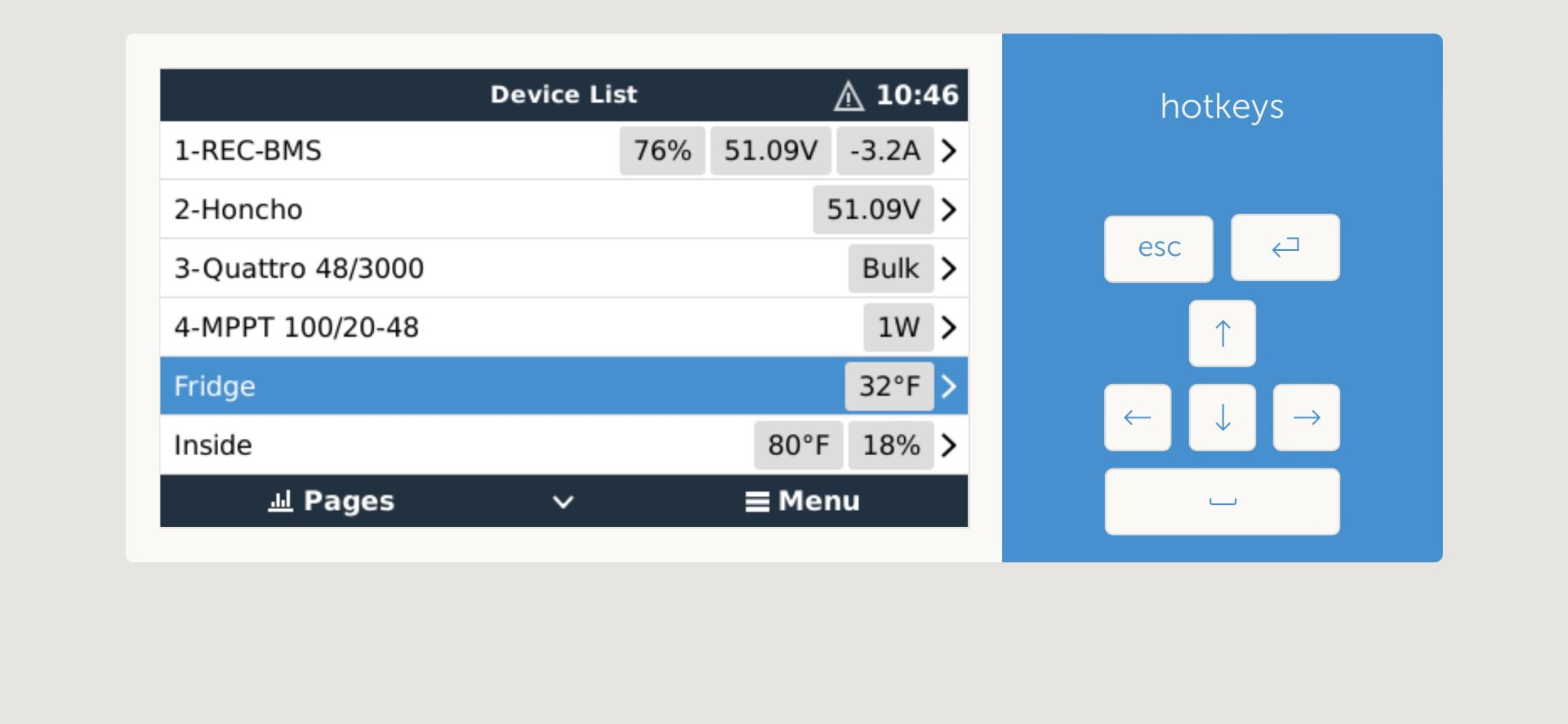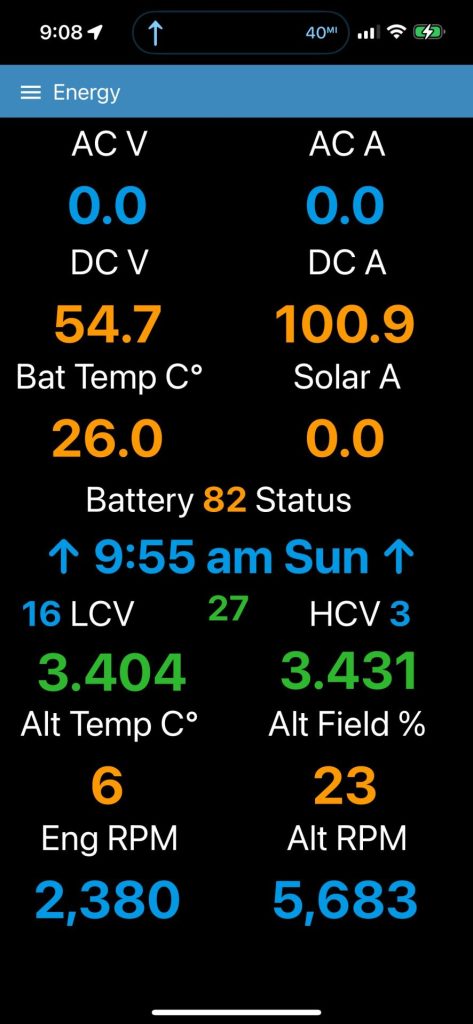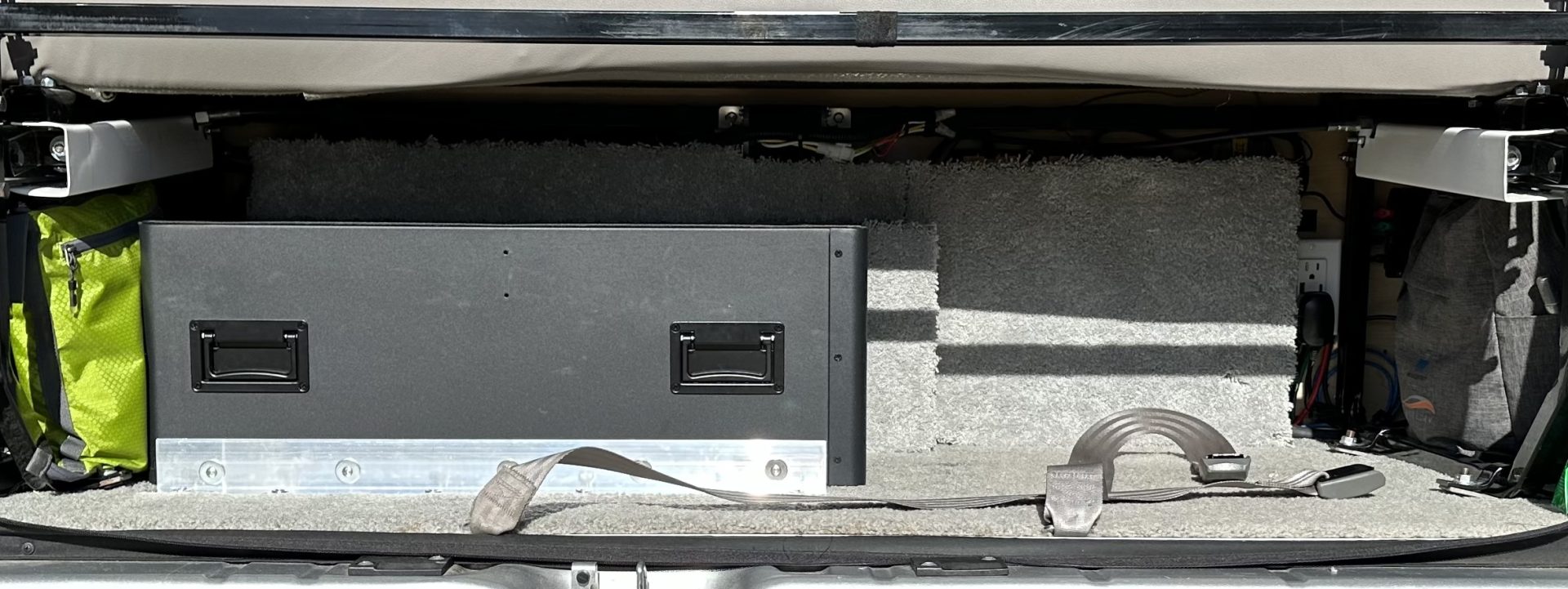Improving Our 48V System
I installed our 48V system in 2019. It has worked reliably and has allowed us to silently camp in comfort in a variety of different settings. In the years following the installation some nice integration was developed between Victron, Wakespeed and the REC BMS. This past December I modified our system to benefit from that new capability.

Cerbo GX display showing the REC BMS, Wakespeed/APS Alternator (Honcho), Victron Quattro and Victron MPPT solar controller.
The Victron components in our setup have always been managed by a Victron Cerbo GX. It controls the other Victron devices through a service named Distributed Voltage and Current Control (DVCC) that takes its guidance from the battery’s BMS. Consolidating the control in this fashion is terrific. You set the BMS to the optimum settings for your battery and all the devices fall in line. The only devices under DVCC control were a Victron Quattro (Inverter/Charger) and a Victron MPPT solar controller. My 58V alternator’s regulator could not be managed by DVCC and was directly controlled by a BMS relay. The relay would simply turn the alternator on or off. There were no shades of grey.
The current round of updates involved the following steps.
Our 12.1 kWh battery pack was replaced with a self-made 15.3 kWh pack that occupies less space in the trunk. I built the pack using a case kit that I purchased from Eel Battery . The case is very space efficient and came with a useful assortment of items to build the pack. I did not use their BMS. I built my own harnesses to attach the cells to a Daly Active Balancer and to the REC BMS. The PDF in the Resources area below will provide more insight in to how the system is designed. The old pack is still in great shape and has been moved to add more storage in our home’s solar setup.

Open View of Battery Pack
The Batrium WatchMon Core BMS was replaced with a REC BMS 2Q. The Batrium BMS was a terrific BMS that integrated well with Victon’s DVCC. I made this change solely to benefit from the additional Wakespeed integration.
The Genasun AR-2 regulator was replaced by a Wakespeed 500 regulator. The Wakespeed will respond to the Cerbo GX and control the alternator’s output through DVCC. It also communicates directly with the REC BMS through Constant Voltage Constant Current (CVCC) so that control is still retained if DVCC is offline. The alternator’s management is no longer just on or off. It’s output can now adjust based on alternator temperature, engine load and other instructions from the BMS.
I added a Wakespeed 48-12 bidirectional converter that also works with DVCC and allows our Nations 270A 12V alternator to charge our 48V bank if necessary. I hope that this redundancy is never needed but it’s nice to know it’s there. The new converter also maintains the chassis battery and allows up to 3000W of power to flow on demand from the 48V system to the 12V systems. Installing it allowed me to remove two other devices from our original setup. The first was a Victron 48-12 30A converter that provided power to the 12V house systems . The second was a Victron 100V 20A MPPT solar controller that was maintaining the 12V chassis battery from the 48V house system.
The last step was to update our MyErvin automation system to interact with the new devices. The image below shows the “Energy” page that I designed to provide an easy to see display while the phone is docked on the dash.

The “Energy” screen on our MyErvin system showing alternator charging underway.
We’ve been traveling quite a bit since the changes and everything has performed well. The system is simpler to manage and has more capability. It’s also great to have a little extra space in the trunk.

New 15.3 kWh battery installed in trunk.